Soviet awards to Norwegian patriots. Part two.
This is the second part of the story about the Norwegian patriots awarded with Soviet awards during World War II. Today our story is about Trygve Eriksen.
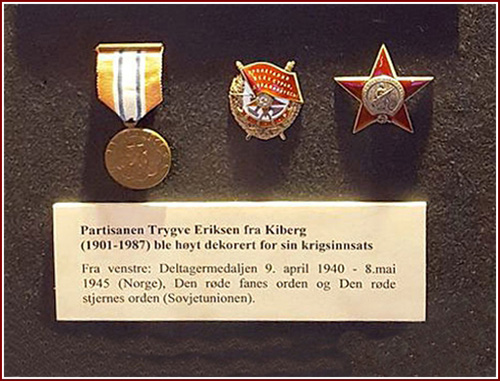
Trygve Eriksen was born on 6 September 1901 in Kiberg. After the occupation of Norway, Trygve, together with his wife Signy and four children, on 12 November 1940, sailed on a motor boat to the USSR, to Rybachy Island. Together with them, dozens of other Norwegians, who were ready to help in the fight against the German invaders, came ashore. The intelligence department of the Soviet Northern Fleet staff hesitated for a long time: to take Trygve to intelligence operations or not, as he was 40 years old and the working conditions of the reconnaissance men required particular firmness and great endurance. The command nevertheless decided to train him to be a reconnaissance officer and by the end of December 1941 he was trained.
First mission. On the evening of 3 February 1942, the submarine C-101, under the command of Captain 3rd Rank Viktor Vecke, entered Tana Fjord and approached Cape Nolnes.
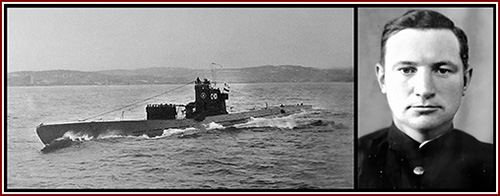
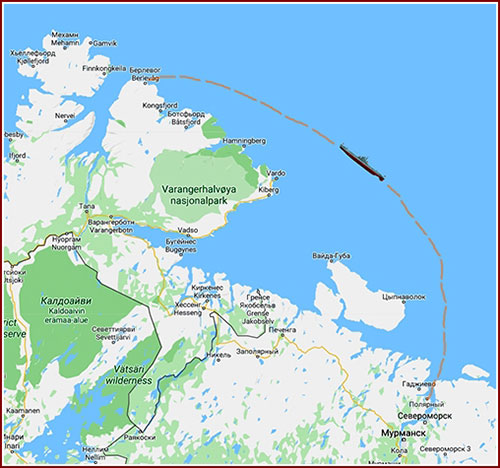
This land area in the north of Varanger was convenient for observing the Barents Sea. After completing the unloading in two hours, the submarine sailed out to sea, leaving three men on the distant Norwegian rocks. They were fellow villagers Trygve Eriksen and Franz Mathisen and the commander of the radio crew of the Northern Fleet staff reconnaissance detachment, Petty Officer 2nd Class Fyodor Krylov. They built a three-by-three meters wide and 70 centimeters high shelter out of stones and tarpaulin. The scouts transmitted information about passing ships and convoys. With the help of locals they gathered information about German troops and the construction of fortifications and an airfield four kilometers west of Berlevog and an airfield in the lower reaches of the Tana river. On 3 April 1942 the submarine "Sh-404" (under the command of Ivanov Vladimir Alekseyevich) took them on board near Cape Nolneset.
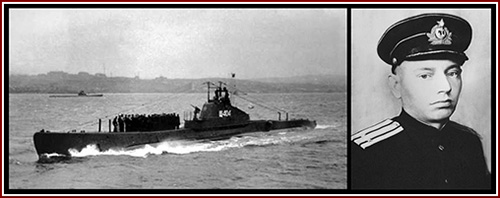
This was the end of our hero's first reconnaissance trip. Soon Eriksen was summoned to Moscow, where he was awarded the Order of the Red Star.
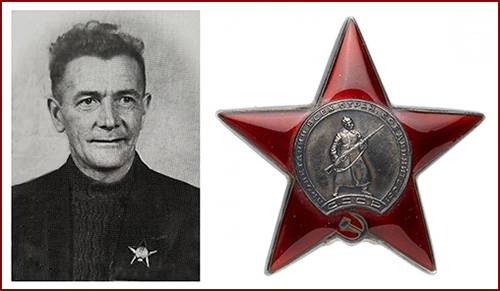
From the award list:
"He stayed two months deep behind enemy lines. In difficult conditions of life under the open sky in the wintertime, he perfectly performed all the tasks assigned to him. He showed courage, resourcefulness and initiative in his work. He delivered valuable operational data to the Northern Fleet command."
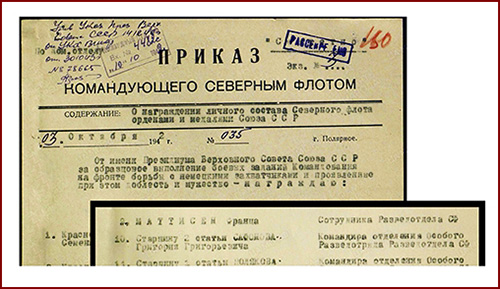
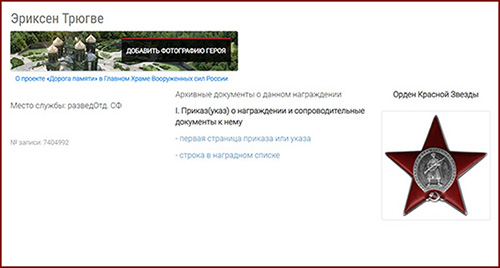
Second mission. On 28 October 1942 the submarine "M-172", commanded by the Hero of the Soviet Union Israel Fisanovich, landed the group in the same place, near Cape Nolnes. The group included fellow countrymen Harald Utne and Leif Utne. The sailors helped the group ferry two and a half tons of cargo ashore.
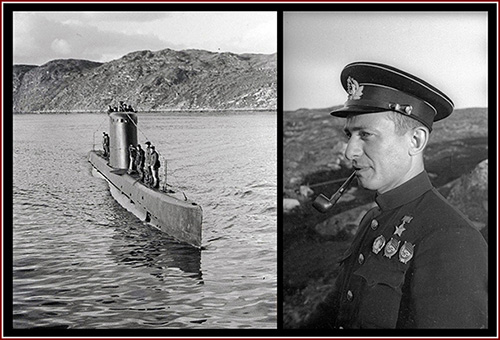
Eriksen recruited local volunteers from Alta to Kirkenes and from Berlevog to Vadso. He transmitted a lot of useful information about artillery batteries, searchlight installations, military depots, coastal minefields and other objects. As well as data on German aviation based in Berlevog. From that moment Soviet aviation would begin regularly bombing this airfield. The approach of winter forced them to look for more secure shelter. From Nolneset they moved to the ravine in the town of Lekwick. On 1 January 1943, the submarine L-20 delivered 800 kilograms of supplies to the group. Eriksen worked with the group until 6 April 1943, when he was picked up by the submarine S-56 (commander Grigory Shchedrin). Instead of Eriksen, Franz Mathiesen landed ashore.

For this operation Eriksen was awarded the Order of the Red Banner.
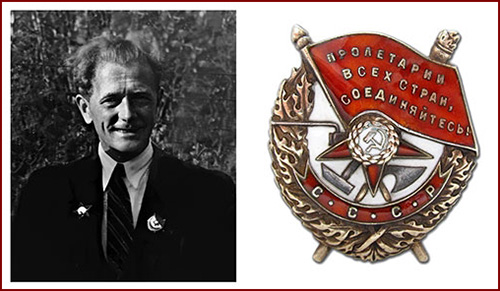
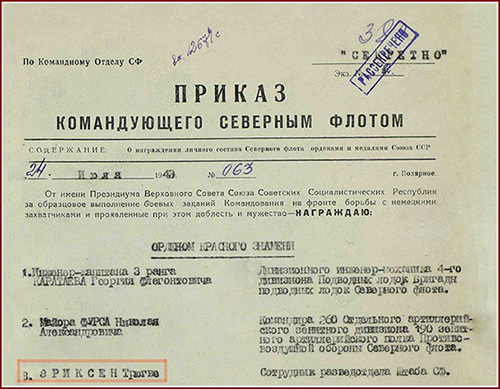
From the award list:
"For the second time during the Patriotic War, Comrade Eriksen performed missions in difficult conditions in the enemy's deep rear by the assignment of his command. In conditions of polar winter he was for five months in the enemy rear and fulfilled the tasks perfectly. In the performance of reconnaissance tasks he displayed steadfastness, persistence, and cleverness. "
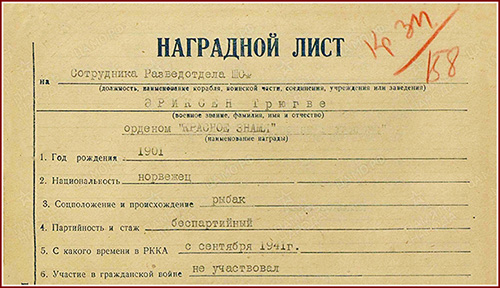
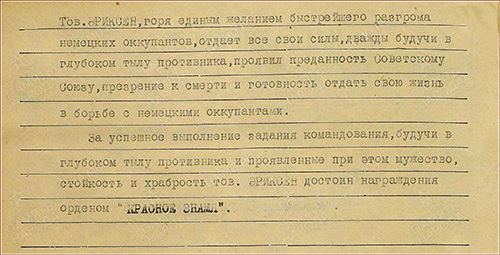
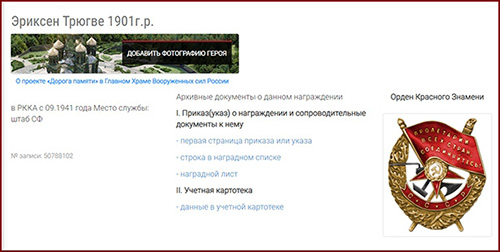
Third mission. On 23 October 1944, Trygve Eriksen with young woman Dagni Sibblund (her husband Alf Sibblund died in the fall of 1942, when their plane was shot down during a reconnaissance mission) were landed near Vadse, where the Northern Fleet was supposed to land assault forces. They landed near a German unit and their parachutes were spotted by a German patrol. Them opened fire, and they were forced to move away from the chase, which was conducted with the use of dogs. On 25 October Red Army units entered Kirkenes. From Vadse, Eriksen and Sibblund moved to Kirkenes on a Norwegian boat, and from there to Polarnoye (Murmansk).
After the war, Trygve and his family returned to their native village of Kyberg.
In May 1965, Trygve took part in an International Meeting of War Veterans and Participants in the Anti-fascist Liberation Struggle, which took place in Moscow. During the meeting, he was personally awarded by Semyon Budyonny.
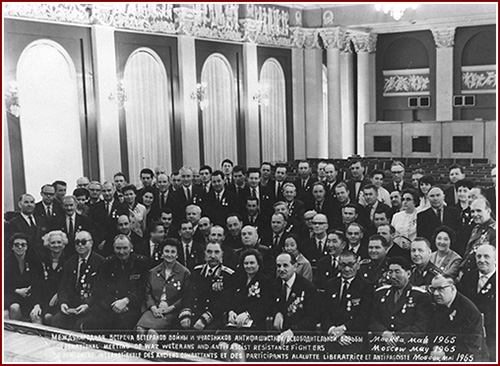
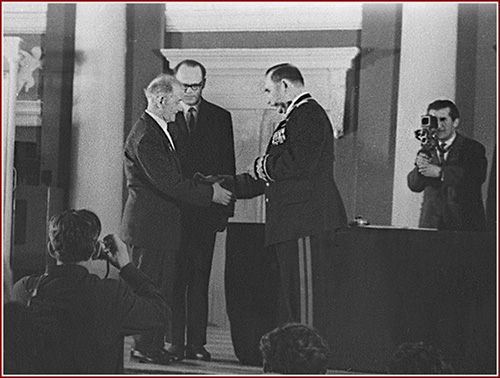
Trygve Eriksen was awarded the World War II Participant Medal by the Norwegian Government.
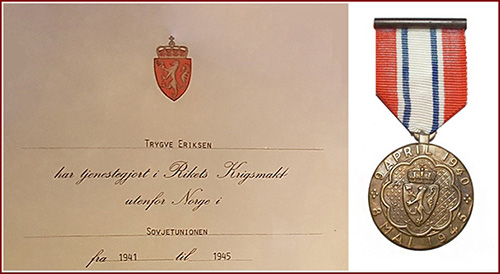
Trygve Eriksen passed away in 1987.
Sources:
- Collection of stories. What the fjords are silent about.
- Hans Kr. Eriksen. Partisaner i nord.
- Hans Kr. Eriksen. Partisaner i Finnmark

